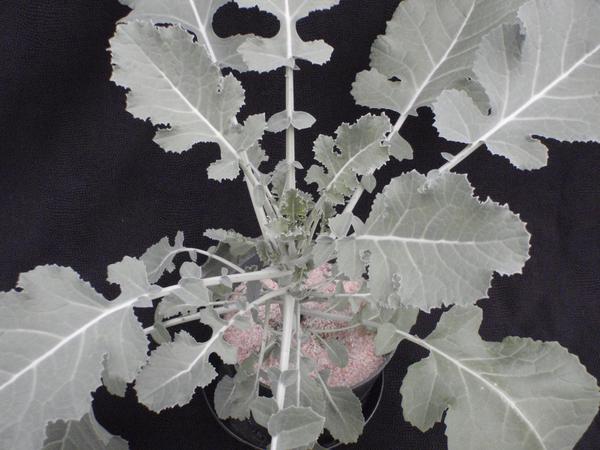From the Field - Agronomy Notes
In this Brassica carinata (Ethiopian mustard) research update, we highlight the symptoms of zinc deficiency. These images are part of a project by the Southeast Partnership for Advanced Renewables from Carinata (SPARC) to develop a diagnostic series for the identification of nutrient disorders of Carinata. Carinata is an exciting new crop in the Southeast used for a wide variety of primary and secondary agricultural products including cover crops, feedstock, high protein meal, and jet fuel. It is similar in management to canola given both canola and carinata are winter annual Brassica oilseed crops. However, carinata oil is not edible.
Symptoms
Like many other micronutrients, zinc (Zn) is responsible for many enzymatic processes in plant metabolism. Among the many functions of Zn are its structural role in RNA polymerase, protein interactions, and indole acetic acid synthesis, the principle auxin in plants which facilitates many important processes including cell division and enlargement, as well as responses to light. High phosphorus availability can induce Zn deficiencies, particularly on low Zn soils. Zn deficient plants may exhibit compensatory uptake of iron, copper, and manganese. Zn deficiencies are more common on calcareous or alkaline soils, and can be alleviated by correcting soil pH or foliar fertilization of chelated Zn.
Zinc (Zn) deficiency symptoms were observed later in growth trials than most other nutrients. This does not mean that zinc deficient conditions will not occur. Zinc is an immobile element which means that symptomology will appear on the upper foliage since it does not translocate from older to newer tissue.
Zinc deficiency manifested very late during the experiment. The carinata plants appeared large and healthy, and showing only subtle signs of stress (Figure 1). Upon closer inspection, symptomology appeared on the mid to upper foliage as a slight paling of the leaf margin (Figure 2). In addition to a slight yellowing or paling, the leaf margin took on a slight purple coloration on the marginal tip (Figure 2).
More research is needed to document later stages of zinc deficiency in carinata. To ensure proper diagnosis the above material should be used in conjunction with a leaf tissue sample and / or field test.
Key Contacts
Key Contact Central East:
Dr. Angela Post, Department of Crop and Soil Science – angela_post@ncsu.edu
Dr. Carl Crozier, Department of Crop and Soil Science – ccrozier@ncsu.edu
Key Contact South East:
Dr. Michael Mulvaney, UF/IFAS West Florida Research and Education Center– m.mulvaney@ufl.edu
Primary Authors: Paul Cockson, Dr. Carl Crozier, Dr. Ramon Leon, Dr. Michael Mulvaney, Dr. Angela Post, and Dr. Brian E. Whipker
Project Team: NC State Univ. personnel Paul Cockson (NC State B.S. student in Agroecology), Ingram McCall (Research Technician in Horticultural Science at NC State), Dr. Carl Crozier (Professor and Extension Specialist at NC State), Dr. Ramon Leon (Assistant Professor at NC State), Dr. Angela Post (Assistant Professor and Extension Specialist NC State), and Dr. Brian Whipker (Professor of Floriculture and Plant Nutrition in Horticultural Science at NC State). Univ. of Florida personnel Dr. Michael Mulvaney (Cropping Systems Specialist at UF/IFAS West Florida Research and Education Center.
Publication date: Jan. 1, 2021
N.C. Cooperative Extension prohibits discrimination and harassment regardless of age, color, disability, family and marital status, gender identity, national origin, political beliefs, race, religion, sex (including pregnancy), sexual orientation and veteran status.





